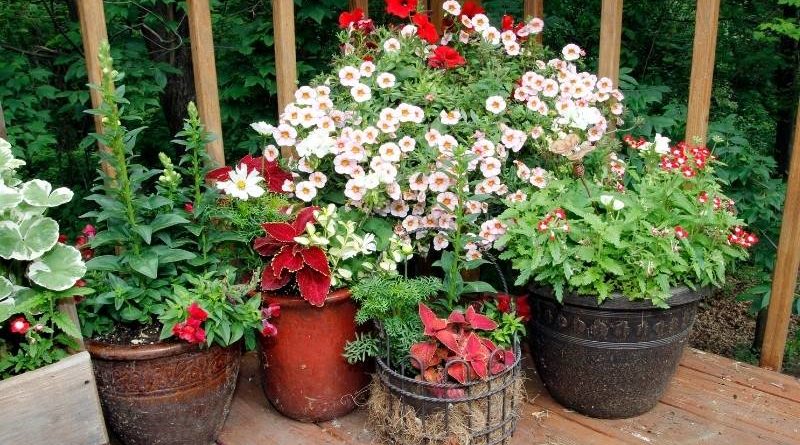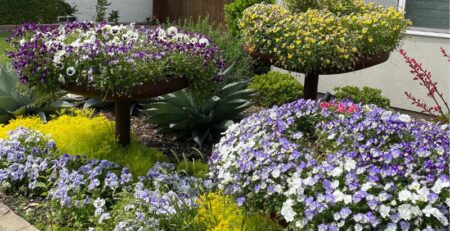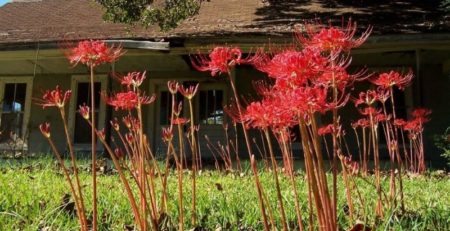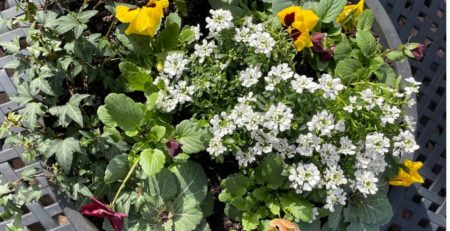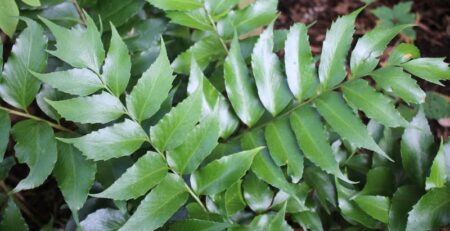Fall Container Ideas
It is so wonderful to approach a home and find a fresh and colorful container garden on the front porch. It is a positive indication that the homeowner enjoys their home and cares what neighbors, guests and passersby see when approaching the house.
On the other hand, particularly at the end of a long hot summer, it is absolutely dreadful and off-putting when there is a pot full of thirsty and almost dead plants that can be seen near the door. I recently visited my sister, who has a stately historical two-story house with a lovely porch enhanced with tall columns, and two antique concrete pedestal urns flanking the entry. Each urn held a single, pitifully dried and shrunken, heuchera. I mentioned that the poor plants needed water and my sister looked surprised and said she had been making sure she watered them once a week. Oh dear!
This past summer has been the hottest in many years and even daily watering has barely kept some plants alive. As difficult as it is to remove a living plant from a container, any scraggly ones ought to be replaced in order to keep the arrangement looking fresh and attractive. If you are thinking of enhancing your front entry with fall containers, here is a step-by-step method.
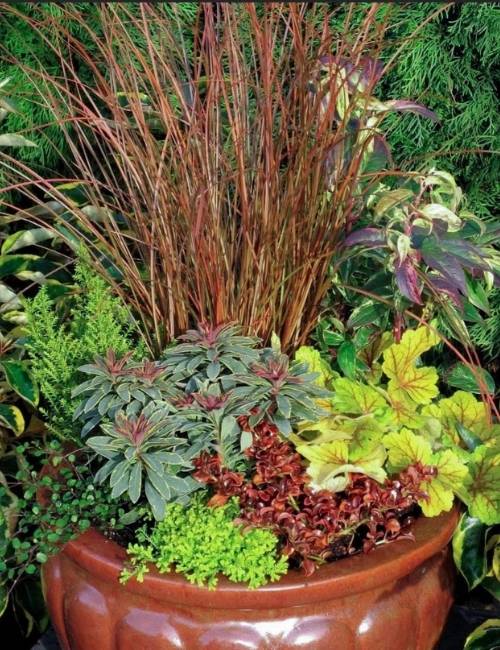
First, choose the container you want to use, and then decide which plants will look best in it. Because I have numerous containers scattered around the patio, yard, and front porch, I often use year-round primary plants in my large containers and then change the smaller surrounding plants in the container seasonally. This saves money on arrangements because the primary plant, usually a small shrub, fills much of the space. I prefer one-gallon Loropetalum, boxwood, Wheeler’s Dwarf Pittosporum, and various hollies for this purpose. These remain the central plant in the pot until they are too large or I need them in a different area of the garden. So, if you have a small shrub in a pot now, that is a perfect start!
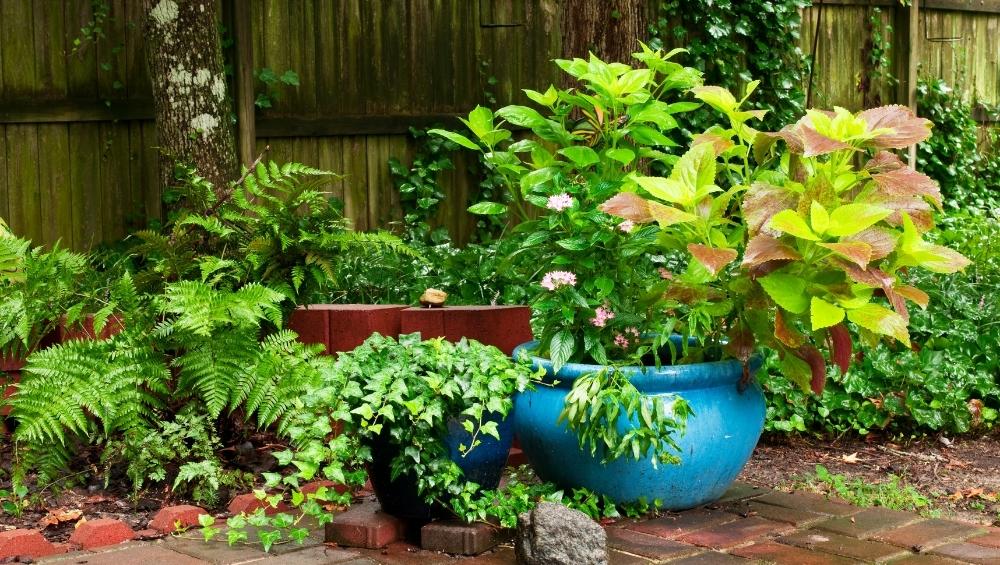
When changing the secondary plants in a container, lift the original shrub out and loosen the soil to make sure it is not root-bound or suffering from a dry spot in the center of the roots. Next, fill the new container two thirds full with fresh, healthy soil. Work in your preferred fertilizer. If you don’t already have a favorite, I prefer PlantTone or FlowerTone made by Espoma. After your container is refreshed with healthy and amended soil, place it to the side and focus on plant selections and design decisions.
Because we are working on a fall container here, you might use a warm autumn color palette. One reliable container design process is known as the “filler, thriller, spiller” method. The “filler” is the primary plant used to fill out the container, which could be the central plant you retain through the seasons. The “thriller” can be a tall plant to provide height, a visually exciting plant, or an unusual specimen. The “spiller” is a usually a trailing plant that spills out of the container. It is also nice to have a variety of tall, medium, and short heights throughout the container.
For an example of a fall container, you might use Loropetalum as the filler and the bright fall flowers are the thriller. Loropetalum has a rich burgundy color that is perfect for autumn, plus a nice arching habit, so it makes a good filler.
Next, look for a tall plant to provide height. A good option for height in your container is purple Fountain Grass. Nicholson-Hardie had a nice selection recently and often has interesting varieties, and Calloway’s and the big box stores usually have Purple Fountain Grass this time of year. Height can be provided by purple Fountain Grass, but the height does not necessarily have to be provided by a plant. Sticks, dry branches, or limbs from the garden are also helpful for height variety.

Contrast is also important and gives an added thriller effect. A grouping of ornamental peppers, Celosia, yellow or orange mums, or other fall flowers adds a perfect mid-size point of interest. Consider incorporating something green like liriope for spikiness or a silvery plant like dusty miller or Artemisia for contrast.
Finally, finish the design with a spiller. Wonderful spillers are ivies and Asian jasmines, both of which come in dark green or variegated. Asparagus fern or creeping Jenny left over from summer containers are both great spillers, as is Italian oregano.

If you need additional design ideas for fresh fall options, consider grouping containers for a bold effect. A standard go-to for fall planters is croton, which offers the season’s bright oranges, reds, and golds. This time of year the garden centers have them readily available. The newer croton mammy https://www.plantindex.com/croton-mammy is super cool with its curly ruffled leaves. If you have three similar pots, for example, three dark colored pots that are not the same size, consider creating a porch arrangement of three pots of croton. Another example is three pots of mums or fountain grass. Arrangements of three or five pots are generally more pleasing to the eye than even-numbered arrangements.
Once you finalize the designs, place the plants, still in their nursery pots, in the container and arrange them as you wish. Next, remove each plant from its nursery pot and nestle it into the soil that you already prepared. When all the plants are where you like, add more soil, carefully tamping down the soil around each plant making sure the soil completely surrounds the plant base. Finally, water the plants well.
Over the next couple of months, check the container often to remove dead leaves and to see whether it needs water. Use a moisture meter (best invention ever https://a.co/d/g6ohwHc ) or dig down into the soil to make sure the plants are maintaining moist but not soggy soil. If one of the plants is not staying bright and upright, remove it and consider replacing it. What could be easier?
If you need more ideas for plants to use in your own fall container, Fine Gardening magazine has very polished submissions https://www.finegardening.com/article/making-creative-fall-containers. Alternatively, The Spruce has nice ideas as well https://www.thespruce.com/fall-container-garden-ideas-4121828 .
If you are preparing your fall containers, the plants alone will be sufficiently attractive and eye-catching. In October, you might consider placing pumpkins in or around the container to provide a Halloween theme; and in November you can change the look to Thanksgiving quickly by trading the pumpkins for gorgeous gourds and a little turkey garden stick.
Happy planting!

